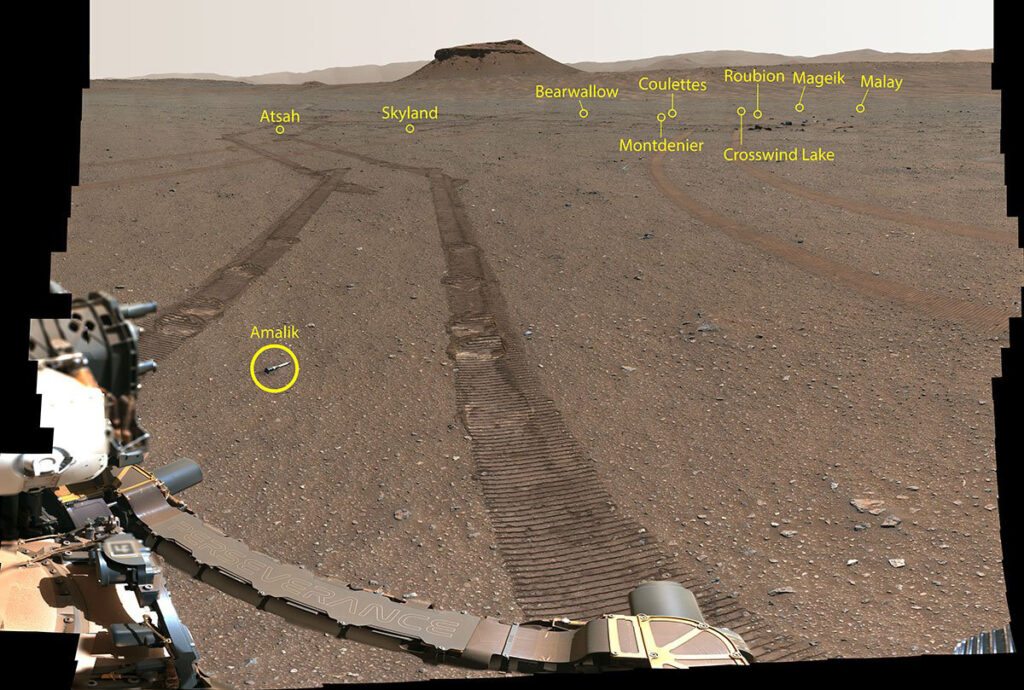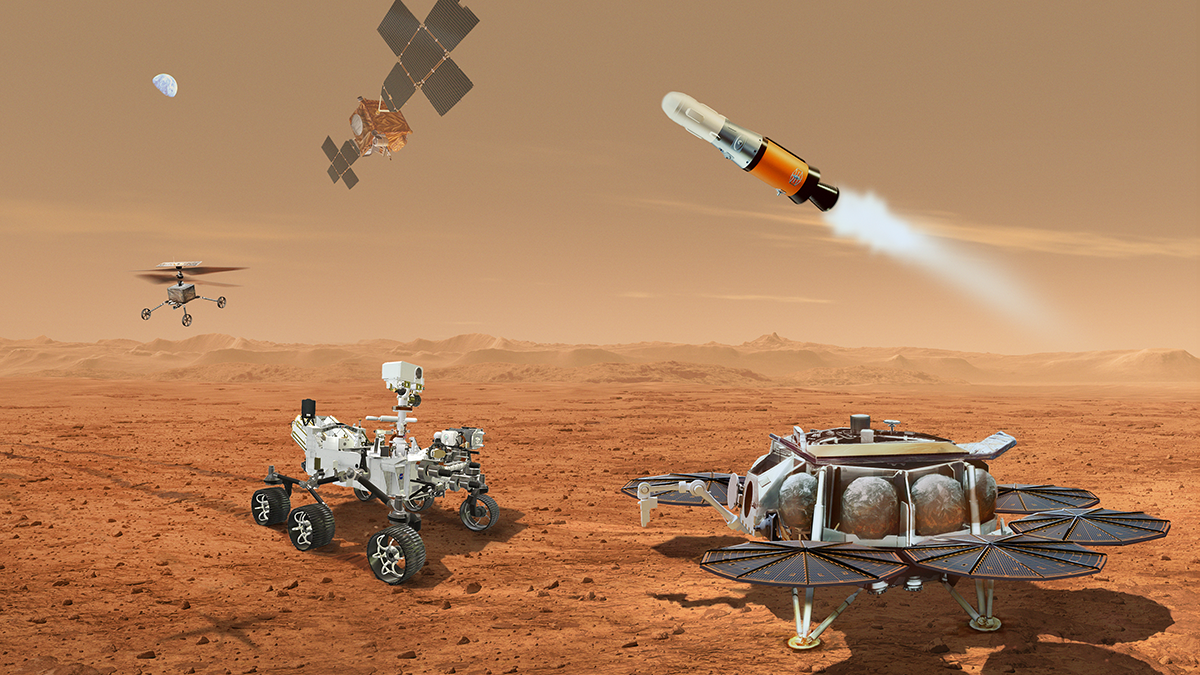On 7 February, the Jet Propulsion Laboratory (JPL) in Pasadena, Calif., laid off 530 staff—around 8% of their more than 6,000-person workforce—along with 40 contractors.
February’s layoffs were the latest in a series of cutbacks and slowdowns at NASA centers. JPL had already laid off 100 contractors in January, NASA’s Goddard Space Flight Center laid off contractors late last year, and work on several projects had slowed or frozen entirely. The sequence was precipitated by the lack of a federal budget for fiscal year (FY) 2024 for several months after the prior year’s appropriations ran out.
Virtual Layoffs
On Tuesday, 6 February, JPL employees received a memo from the center’s director Laurie Leshin.
“While we still do not have an FY24 appropriation or the final word from Congress on our Mars Sample Return (MSR) budget allocation, we are now in a position where we must take further significant action to reduce our spending, which will result in layoffs of JPL employees and an additional release of contractors,” Leshin wrote. The layoffs would happen the following day.
Everyone, barring a few lab-essential personnel, was directed to work from home on 7 February and attend a virtual meeting with their division supervisors explaining the process. Then staff and contractors awaited individual emails saying whether or not they still had jobs.
Data obtained from California’s Employment Development Department show that the majority of February’s staff layoffs (71%) affected engineering-related positions. Among those, systems engineers were particularly hard hit, with 117 of 822 engineers losing their jobs, 14% of the workforce, whereas mechatronics engineers lost the highest fraction (25%) of their workforce (32 of 115).
Leshin told Space News in April that though significant, the cuts did not impact JPL’s core capabilities. “We worked very hard in spite of having to make the deep cuts and to make sure those capabilities were intact.”
Several former JPL employees declined to comment for this story.
Capping NASA’s Budget
On 9 March, Congress passed the Consolidated Appropriations Act of 2024, which provided a budget for NASA and several other federal agencies for FY24. NASA’s 2024 budget is $24.875 billion—2%, or $509 million, lower than in 2023.
“You can’t pursue the program that NASA is directed to do while giving it less money.”
“You can’t pursue the program that NASA is directed to do while giving it less money,” said Casey Dreier, chief of space policy at the Planetary Society in Pasadena.
“It’s good to have a budget, yes,” Dreier said. However, when factoring in recent inflation, “the 2% cut actually compounds to a loss of about a billion dollars in buying power since NASA’s peak in 2020.”
“In a little agency that is doing an awful lot, it makes a big difference,” NASA administrator Bill Nelson said about the cut in a call with reporters on 11 March. Nelson blamed the budget constraints on caps put on nondiscretionary defense funding in FY24 and FY25. The caps were demanded by “a small handful of people in the House of Representatives” as part of a deal to raise the debt ceiling, Nelson said.
Most directorates and divisions received relatively flat funding over FY23 levels. Funding for the Artemis program, Astrophysics Division, and the Near-Earth Object Surveyor in the Planetary Science Division grew slightly, and the VERITAS Venus orbiter mission is back on the books.
The Science Mission Directorate took the biggest hit, receiving $461 million less than it did in FY23. All of that cut came from the Planetary Science Division, specifically from MSR.
“Mars Sample Return basically became the bank that prevented cuts from every other NASA science project,” Dreier said. “That’s not a sustainable strategy.”
Mars Sample Return on Ice
MSR was allocated at least $300 million, and up to $949 million, in FY24. The lower number was a compromise between the Senate’s bill, which initially canceled the mission entirely, and the House’s bill, which appropriated the higher amount. The appropriation allows NASA to spend up to the higher amount if money is freed up elsewhere within its planetary science budget.
Leshin’s February memo explained that NASA had directed JPL to plan for receiving only $300 million for MSR. Staffing cuts were made in anticipation of that, and ultimately, MSR was guaranteed only $300 million.
For the past several years, MSR has been a budgetary flash point. The mission partners with the European Space Agency to collect and return to Earth samples of Mars’s soil gathered by the Perseverance rover. Cost overruns, delays, and mismanagement brought MSR under the scrutiny of two independent review boards (IRBs), which advised that the mission as is was not feasible in scope, design, or budget.

In response to the second IRB, NASA interviewed dozens of subject matter experts and evaluated 20 mission design proposals. The agency hasn’t finalized the mission design or architecture but concluded that a redesigned MSR would likely cost $8–$11 billion and would return samples to Earth in 2040. The agency announced on 15 April that it is soliciting innovative and competitive mission architecture proposals to reduce the cost and shorten the timeline.
“The bottom line is, an $11 billion budget is too expensive, and a 2040 return date is too far away,” Nelson said in a press conference on 15 April.
The IRB also recommended that JPL retain its MSR campaign-level technical leadership role, but NASA decided to absorb many of those responsibilities into the MSR Program Office at its Washington, D.C., headquarters. The goal of centralizing MSR leadership at the D.C. office rather than split between D.C. and JPL is to improve communication, coordination, and mission development across NASA centers that will build, test, and run the mission after launch.
NASA initially listed “TBD” as its requested MSR budget for FY25 but has since requested $200 million for MSR as it evaluates potential mission architectures.
According to NASA, the plan allows for more flexibility in the mission’s construction, launch, and management; solicits innovative and competitive mission architecture proposals; improves communication between NASA and its external stakeholders; increases accountability; and maintains a balanced science portfolio across the agency.
A Bumpy Future
Other high-profile NASA missions have come under congressional fire in the past and gone on to do great things. The oft-delayed and far-over-budget James Webb Space Telescope was nearly canceled by Congress several times before it launched in 2020. It has since provided unprecedented views of our nearby planetary neighbors and some of the farthest corners of the universe and is poised to usher in a new paradigm of astrophysics. Many planetary scientists believe MSR has the same revolutionary potential for planetary science.
However, JPL has laid off many of the specialists and engineers with the bespoke knowledge needed to build complex missions. Those engineers may have already found jobs elsewhere or may be wary of returning.
In the present political situation, more cuts may be on the way when FY24 ends in October. The agency also faces uncertainty if a new administration takes office in January.
“NASA is not an agency that depends on or uses mass industrialization or economies of scale,” Dreier said. “You lose money, you lose people. Everything slows down or you lose projects.”
—Kimberly M. S. Cartier (@AstroKimCartier), Staff Writer

